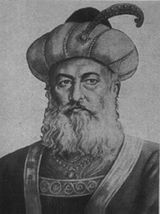Historians say that the actual founder of the Muslim Empire in India was Muiz-ud-din Muhammad bin Sam, also known as Muhammad of Ghur, Muhammad Ghori or Shihabud Din Muhammad Ghori. Though, it was the Muslim invader Muhammad bin Qasim, who invaded India for the first time, followed by Mahmud of Ghazni, both of them could not create a Muslim empire in India in a true sense. It was Muhammad Ghori who was successful in establishing a secured and powerful Muslim kingdom in India, after a series of invasions. He was the true founder of the Muslim rule in India.
| Title | Description |
|---|---|
| Personal | |
| Name: | Shahab-ud Din Muhammad Ghori |
| In Urdu: | شہاب الدین محمد غوری |
| Famous As: | Muhammad Ghori, Muhammad of Ghor |
| Nationality: | Afghani |
| Predecessor: | Ghiyath al-Din Muhammad |
| Successor: | Ghor: Ghiyath al-Din Mahmud |
| Ghazni: | Taj ad-Din Yildiz |
| Delhi: | Qutbu l-Din Aibak |
| Bengal: | Muhammad bin Bakhtiyar Khilji |
| Multan: | Nasir-ud-Din Qabacha |
| Religion: | Islam |
| Born | |
| Date: | 1149 |
| Place: | Ghor, Hazaristan region of present-day Afghanistan |
| Family | |
| Ethnicity: | Ghorid |
| Parents: | Baha al-Din Sam I |
| Siblings : | Ghiyath al-Din Muhammad |
| Relatives: | Uncle -Ala al-Din Husayn, Cousin- Sayf al-Din Muhammad |
| Died | |
| Date: | 15 March 1206 |
| Rest Place: | Dhamiak, Jhelum District, present-day Pakistan |
| Aged: | 44 |
| Cause of Death: | Stabbed with knives by a Hindu group attack while offering his evening prayer |


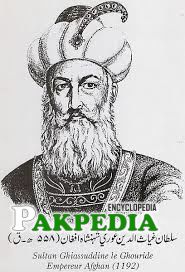
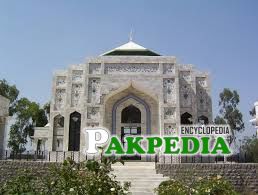
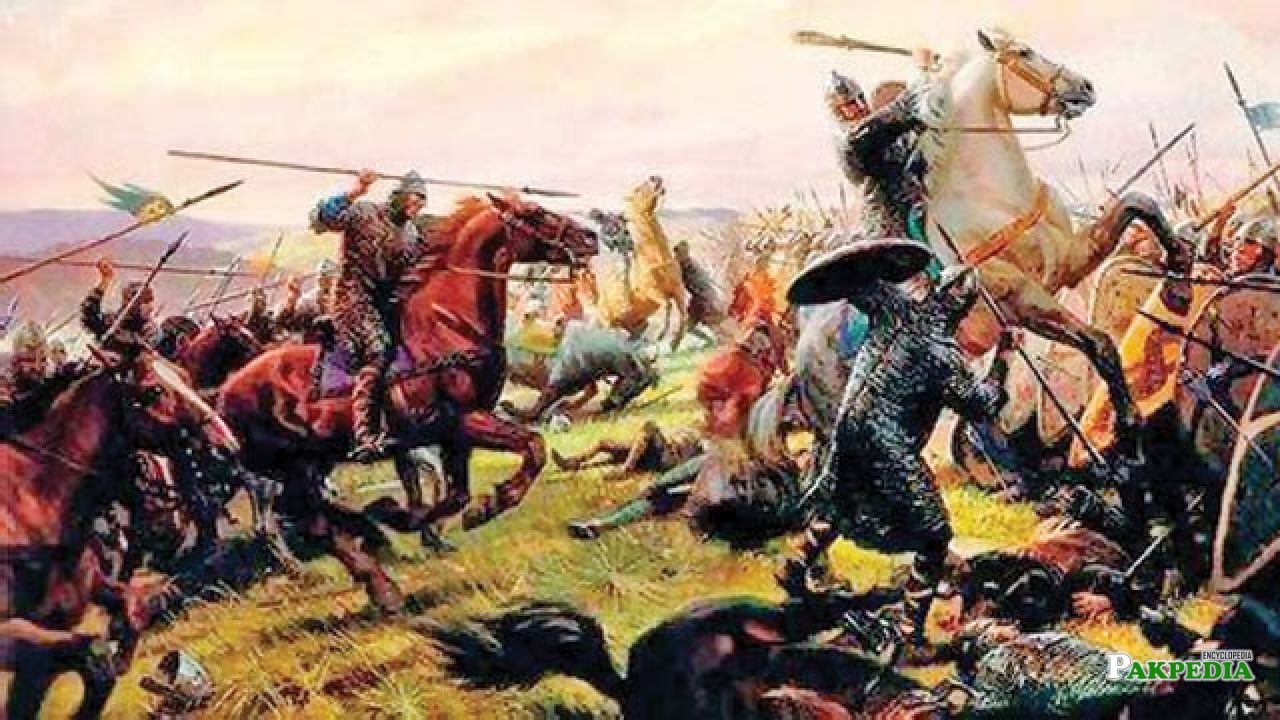
Table of Contents
Early life
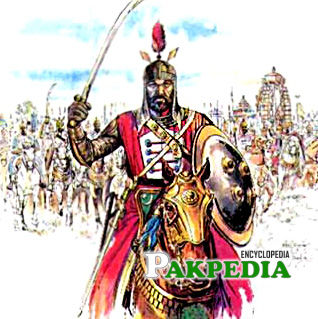
After Mahmud of Ghazni the next invader in India was Muhammad Ghori, whose royal title was Mu’izzuddin. As a prince, he was known as Shahab-ud-din. He belonged to the Ghorid dynasty which replaced the Ghaznavids in Afghanistan. He assisted his elder brother Ghiyas-ud-din and remained a loyal subordinate until his death in 1202 and became the ruler of his empire and ruled until his assassination in 1206. His dynasty is known as Ghori because his family belonged to the territory of Ghor in Afghanistan. [1] early life
Ghorid Dynasty
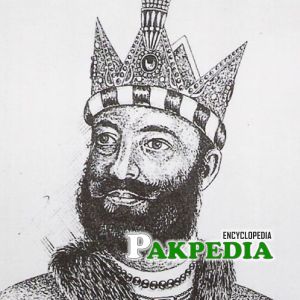
Ghor was a province under the Ghaznavid rulers. During the reign of Sultan Masud III, Eiz-ud-din Hussain, a son-in-law of Sultan Ibrahim, was appointed the governor of Ghor. Eiz-ud-din’s son and successor Qutub-ud-din Muhammad married Sultan Bahram’s daughter. He founded the city of Firuzkoh and assumed the sovereignty of that place. When Sultan Bahram got knowledge of Qutub-ud-din’s intentions he poisoned Qutub-ud-din. Saif-ud-din, a brother of Qutub-ud-din, marched towards Ghazni to take revenge of his brother’s death. Ghazni fell and Bahram Shah fled to India. After some time Bahram Shah returned to Ghazni and put Saif-ud-din to death. Ala-ud-din, another brother of Qutub-ud-din, defeated Bahram Shah and recaptured Ghazni. Bahram again fled towards India where he died in 1152. Thus Ala-ud-din Husain became the first king of Ghor (1152-1156).
Confinement
He appointed his nephews Ghias-ud-din and Muiz-ud-din to the government of Sunja in Ghor. When Ala-ud-din got news that his nephews were making encroachments on their neighborhood, he confined them in a fort of Joorjistan. Sultan Khusrau Shah, Bahram’s son, fled to Hindustan and established his capital at Lahore. After the return of Ala-ud-din to Ghor, Khusrau tried to recover Ghazni but then he got news that the turks of Ghuzz were marching with a large army to subdue Ghazni. So he retired to Lahore where he died in 1160. Meanwhile the Ghuzz expelled the troops of Ghor and got possession of Ghazni. At Ghor, Ala-ud-din was succeeded by his son Mallik Saif-ud-din (1156-1157), who on his accession released his two cousins from their confinement in Joorjistan and again conferred on them the government of Sunja. Mallik Saif-ud-din was succeeded by his eldest cousin Ghias-ud-din Muhammad Bin Sam (1157-1203). [2] Ghorid dynasty
Rise to power of Shahab-ud-din Muhammad Ghori
When Sultan Ghias-ud-din ascended the throne of Ghor, he made over to his brother Muiz-ud-din the government of the city of Takinabad, the largest town in Garmsir. Historians say that the brothers held a sort of joint rule. From Takinabad, Muiz-ud-din began to make continuous raids to Ghazni which was then under the control of the Ghuzz turks. Finally in 1173, when Ghias-ud-din conquered Ghazni, he appointed Muiz-ud-din his viceroy at Ghazni; and thus began the journey of Shahab-ud-din Muhammad Ghori also known as Muiz-ud-din Muhammad Bin Sam (1173-1206). Ghori officially succeeded his brother on his death in 1203. [3] rise
Invasions

Muhammad Ghori was an ambitious leader. He was the younger brother of the ruler of Gaur, Ghais-ud-Din, who handed the responsibility to Ghori to rule over Ghazni in 1173 AD. But Ghori, being a very ambitious ruler, was not satisfied with only Ghazni and wanted to expand his empire to get hold of more power and control and wanted to conquer India. He was well aware of India’s political, religious, social, and military weaknesses and also the enormous wealth and gold that India had. He wanted to attain more power and more wealth. He also had the desire to spread Islam in India by conquering the Hindus of the country. Thus, for all these reasons, he carried out a number of invasions to take over India. [4] invasion and stength
The Strength of warring Forces
Though the exact number of forces is not known for all his invasions; according to historians, in the second battle of Tarain, the Rajput army consisted of 3,000 elephants, 3,00,000 cavalry and infantry, while Muhammad Ghori had 1,20,000 fully armoured men.
Invasion of Multan
In 1175 Ghori captured Multan from the Hamid Ludi dynasty which was also Pashtun but were alleged to be un-Islamic on the account of their association with Ismailite Shi’iate sect and also took Uch in 1175.
Battle of Gujarat or Kayadara 1178
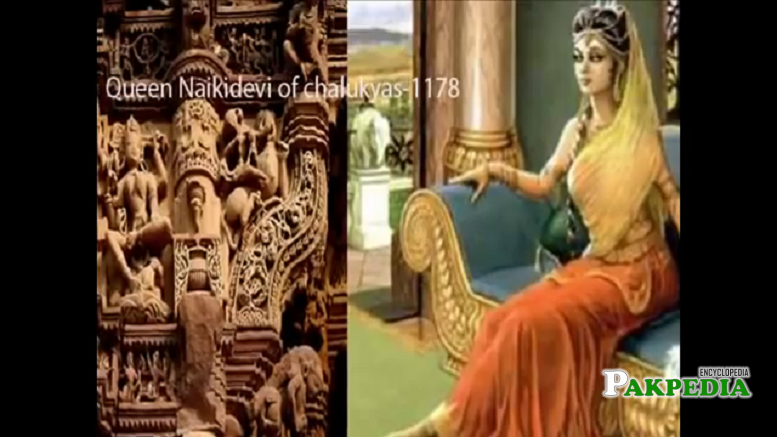
The battle of Gujarat or Kayadara (1178) was a defeat suffered by Muhammad of Ghur during his first campaign against a Hindu ruler in India. Muhammad’s first campaign had been against the Muslim rulers of Multan in 1175 and had ended in victory. In 1178 he turned south, and led his army from Multan to Uch and then across the desert towards the Gujarat capital of Anhilwara (modern Patan). [5] battles
Solanki dynasty
Gujarat was ruled by the young Raja Bhimdev II (ruled 1178-1241), a member of the Solanki dynasty (one of several Chalukya dynasties), although the age of the Raja meant that the army was commanded by his mother Naikidevi. Muhammad’s army had suffered greatly during the march across the desert, and Naikidevi inflicted a major defeat on him at the village of Kayadra (near to Mount Abu, about forty miles to the north-east of Anhilwara). The invading army suffered heavy casualties during the battle, and also in the retreat back across the desert to Multan. Muhammad of Ghur never returned to Gujarat. An army led by Qutb al-din Aibek, his deputy in India, invaded in c.1195-97 and plundered the capital, but then returned to Delhi. Gujarat wasn’t annexed by the Sultanate of Delhi until 1297.
Capture of Lahore 1181
In 1181, Shahabuddin Ghori invaded the Ghaznavid Empire in India, reaching and capturing Lahore, thus ending the Ghaznavid Empire and bringing the remaining Ghaznavid territory under Ghorid control. This victory marked the beginning of the Ghorid Empire. He captured Lahore in 1181 and constructed the fortress of Sialkot. In 1191, he pushed further eastwards against the Hindu Rajput kingdoms, and his forces were defeated by the armies of Prithviraj Chauhan, the Hindu Rajput ruler of Delhi and Ajmer and his allies. A year later, in 1192, Ghori again fought the Hindu Rajputs, which resulted in victory.
Defeat in the First Battle of Tarain 1191
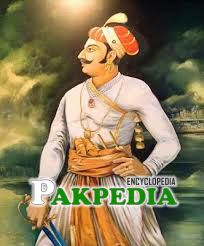
The first move was taken by Muhammad of Ghor who captured till the border of Prithviraj’s kingdom. In 1191 Muhammad captured either the Sirhind or Bhatinda fortress (which is now in Punjab) in Prithviraj’s northwestern frontier. The next step was taken by Prithviraj who along with his vassal Govinda-raja of Delhi rushed to save the frontier and the two armies met at Tarain.
Confrontation
The Rajput armies first defeated the two wings of the Muslim army. The Muslim army fledwhile Muhammad still remained in the center with the rest of the Turk soldiers. It was then Govind-raja and Muhammad of Ghor came face to face. The two were injured with repeated clashes. Muhammad could not recover from the blow and fainted from the shock. Fearing that their leader had died the army ran away.Mohammad was saved by one of his slaves.When he returned to Ghazni he vowed to avenge the defeat and started preparations immediately.
Victory in the Second Battle of Tarain 1192
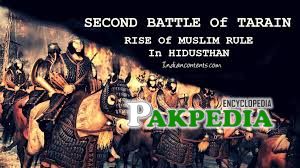
In 1192, Muhammad Ghori returned with a larger army and met again Prithwiraj’s army at Tarain. This time the force of Prithwiraj was also larger and it included many Rajput forces from Northern India. Muhammad Ghori delivered an ultimatum to prithwiraj Chauhan that either he changed his religion to Muslim or be prepared to be defeated by Muhammad Ghori. Prithwiraj Chauhan in reply offered him a cease-fire to consider a retreat with his army.
Victory
Muhammad Ghori adopted a tactic and replied Prithwiraj with a letter indicating the acceptance of the truce. The Rajput army believed it and they started celebrating with their guards in a relaxed and casual mood. In the mean time Ghori’s army attacked Prithwiraj’s army in the very early hours of morning, as they were unprepared for the battle. However the Rajput army could raise a protection against Muslim army and they retreated. Muhammad’s army sent waves of mounted archers to attack the Rajput forces but had to set back as Prithwiraj’s elephant force advanced. At dusk Muhammad Ghori was able to achieve the victory as he charged the center of Rajput defense with a heavily armored horsemen and made them confused.
Most decisive battle
About hundred thousand Rajput soldiers are said to have died in the battle. Prithwiraj was imprisoned and was taken to Ghazni. The second battle of Tarain is believed to be most decisive battle in the Indian History as it opened the path for conquerors of India. Muhammad and his successors were able to conquest over the Rajputs and established an Islamic Empire in India, the Sultanate of Delhi.
The Battle against Jai Chand Rathor in Kanuaj 1194 AD
Jai Chand Rathor, the king of Kanuaj was not in good terms with Prithavi Chauhan and was happy when he was captured and killed. But, in 1194 AD, when Muhammad Ghori invaded India again, this time he attacked Kannauj and defeated Jai Chand Rathor, in the battlefield of Chandawar. After this invasion, Qutab-ud-Din Aibak became the viceroy of Muhammad Ghori. After this, while Ghori returned back to the west to carry out his conquests in the western frontiers, Qutab-ud-din Aibak continued his conquests in India.
Conquests of Gujarat Bundelkhand Bengal and Bihar 1195-1202 AD
Qutab-ud-Din Aibak attacked Bhindev, king of Gujarat. He was defeated first but in the next battle he defeated Bhimdev and conquered Gujarat. His next target was Bundelkhand, ruled by the Chandel Rajputs. He defeated them also and conquered Bundelkhand. During this time, Muhammad Khilji, a slave of Muhammad Ghori attacked Bihar in 1197 and Bengal in 1202. Both Bengal and Bihar came under the control of Ghori, and Khilji became the viceroy of Bengal and Bihar.
Revolt of Khokhars
1205 AD In 1205, Ghori again came to India, and this time the Khokhars stood against him. But he defeated them.
Ghorid-Ghaznavid Struggles

Shahabuddin Ghori is credited with the decimation of the Ghaznavids his ancestral enemies. [6] struggles
- In alliance with the Hindu Raja of Jammu Vijaya Dev, he attacked Lahore in 1187, which was held by his ancestral enemy, the descendent of Mahmud of Ghazni, and made him prisoner. Mahmud of Ghazni’s line of Sultans and Governors became extinguished.
- Mahmud Ghazni had attacked Ghor and the King Amir Suri an ancestor of Shahabuddin Ghori died taking poison after being taken prisoner. Various sources including Ferishta and Siraj attests to the events.
- In the following year AH 401 (AD 1010), Mahmood led his army towards Ghoor
- According to Minhaj us Siraj, Amir Suri was captured by Mahmud of Ghazni, made prisoner along with his son and taken to Ghazni, where Amir Suri died.
- Soor, being made prisoner was brought to the king, but having taken poison, which he always kept under his ring, he died in a few hours; his country was annexed to the dominions of Ghizny.
- A little over a hundred years after Mahmud, one of his successors to the throne of Ghazni fell into a blood feud with the ruler of Ghor, southeast of Herat. In reprisal Ghazni was sacked by the prince of Ghor a fellow Muslim in 1150, and burned for seven days and nights. All the magnificent Mahmudi palaces and halls were destroyed and plunder, devastation and, and slaughter were continuous. It might be a historian reporting one of Mahmud’s own murderous Indian raids.
- The Ghori victor earned the title of Jahansoze the world burner.
- The bells ring again : the perpetrations of the northern foreigners were not essentially anti Hindu. They could be quite merciless with Muslim rivals as well, for that was a part of their way of life. Ghazni now fell to a Turkman tribe which was in its turn ousted by the nephew of Jahansozein 1173. The later gave it to his brother later to be known as Muhammad of Ghori .
- Muhammad of Ghori launched expeditions into India, first capturing Multan from a fellow Muslim chief in 1175-76. Three years later he invaded Gujarat and was roundly defeated by the Hindu King.
- Another three years later, and Shahabuddin Ghori was back to take Peshawar and Sialkot in 1181. Now in alliance with the Hindu Raja of Jammu Vijaya Dev, he attacked Lahore in 1187, which was held by his ancestral enemy, the descendent of Mahmud of Ghazni, and made him prisoner. Mahmud of Ghazni’s line of Sultans and Governors became extinguished.
Consolidation of the Ghorid Empire
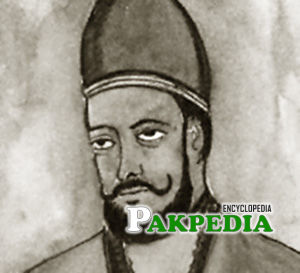
After defeating Prithvīrāj Chauhān by attacking at night. Prithvi raj was captured and taken to Ghauri’s kingdom. Shahabuddin Ghori marched onwards unchallenged towards Ajmer and soon established Ghorid control in northern and central India. Rajput kingdoms like Saraswati, Samana, Kohram and Hansi were captured without any difficulty. Finally his forces advanced on Delhi, capturing it soon after. Within a year, Ghaurī controlled northern Rajasthan and the northern part of the Ganges-Yamuna Doab. The Kingdom of Ajmer was then given over to Golā, on condition that he send regular tributes to the Ghorids. Shahabuddin Ghori, having settled the affairs of the province of Lahore, conferred the government of Lahore on Ali Karmakh who was then the Governor of Multan. In 1206, Shahabuddin Ghori appointed Qutb-ud-din Aibak as his Naib us Sultanat in India at a grand darbar (reception) at Lahore, which was attended by a large majority of the nobles and dignitaries of his kingdom. It was at this occasion that Shahabuddin Ghori bestowed upon Qutb-ud-din the title of Aibak, meaning “Axis of the Faith”.
Returned to Ghazna
Muḥammad Ghorī returned west to Ghaznā to deal with the threat to his western frontiers from the unrest in Iran, but he appointed Aibak as his regional governor for northern India. His armies, mostly under Turkish generals, continued to advance through northern India, raiding as far east as Bengal. Aibak sacked Ayodhya in 1193, followed by his conquest of Delhi. In 1204, after becoming sultan, Shahabuddin Ghori defeated the advance ofMuḥammad II of Khwārezm. Aibak’s protégé Muhammad bin Bakhtiyar Khalji had been appointed as a general by Muhammad of Ghor in 1203, and in 1204 he helped defeat the army of Lakshman Sen of the Sena Dynasty, but Shahabuddin Ghori failed to conquer Bengal. In 1206, a rebellion rose in Punjab. Muḥammad Ghorī returned to India and crushed the rebels, but was assassinated at Jhelum (where he was buried) on his way back to Ghaznā.
Attributes of Ghori described by historians
Ghori as a practical statesman
Historians regards Ghori as a practical statesman who took the fullest advantage of the rotten political structure of India. Ghori gave proof of his statesmanship while dealing with different Rajput rulers. After his victory over Prithviraj, instead of annexing Delhi and Ajmer to his territories, he handed over the administration of Delhi and Ajmer to the relatives of Prithviraj. Ghori did not change the status of those Hindu chiefs who accepted his suzerainty and did not interfere in their administration. Of course, he established forts in these territories. [7] attributes
Political realism of Ghori
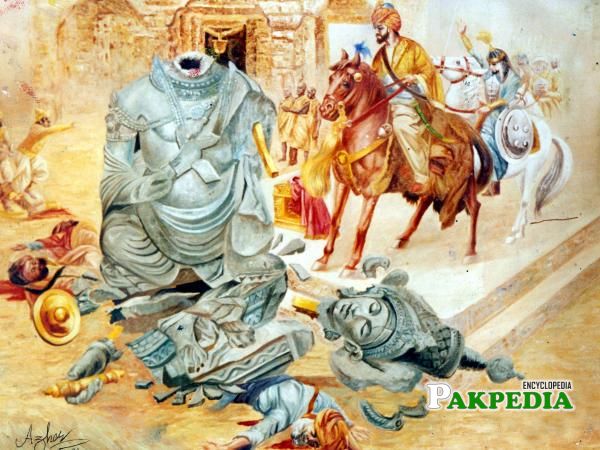
Prof. K.A. Nizami puts stress on two qualities of Ghori i.e. his digged tenacity of purpose and his grim political realism. He wrote, “This Hero of three stupendous defeats at Andh-khud, Tarain and Anhilwara had to his credit the establishment of one of the greatest empires of the middle ages and in this he definitely rises above Mahmud of Ghazni.” According to Stanley Lane-poole, Ghori’s conquests in India were wider and far more permanent than Mahmud’s. He wrote, “of the two tides of Mohammedan invasion that surged into India, Mahmud’s had left little trace. It had been but a series of triumphant raids.”
Great ability to select officers
Ghori had the art of selecting the best men for his services. He trained generals and administrators like Qutab-ud- din Aibak, who proved quite competent to maintain his empire.
Appointment of governors
Ghori appointed governors of the provinces he conquered. These governors consolidated the position of Turks and they suppressed rebellions. After the death of Ghori, Qutub-ud-din Aibak, his most able military commander founded the Slave Dynasty that ruled India for about one hundred years.
Ghori as a conqueror of territory
In the words of Dr. R.C. Majumdar, “Sultan Mahmud was undoubtedly one of the greatest military leaders, the world has ever seen. It is true that he never faced any defeat. It is, however, equally true that he never tried to consolidate his position. He came like “a wind and went back like a whirl wind.” Unlike Mahmud, Ghori was not a great general and had to suffer humiliating defeats several times. He was defeated by Mularaja II, the ruler of Gujarat; by Prithviraj Chauhan in the first battle of Tarain and by Khwarizam Shah, the ruler of Persia. In fact, he was killed in his own camp by his Khokar enemies. But the greatness of Ghori was that none of these defeats could weaken his spirits or check his ambitions. He took his every failure as a valuable experience. He improved upon his weaknesses, removed them and ultimately got success. The conquests of Ghori brought about more permanent results than the conquests of Mahmud. Mahmud was contented to plunder the wealth of India and did not think of establishing his empire. Mahmud kept himself busy in invading and looting but Ghori attempted to build -up an empire which lasted for centuries.
Death
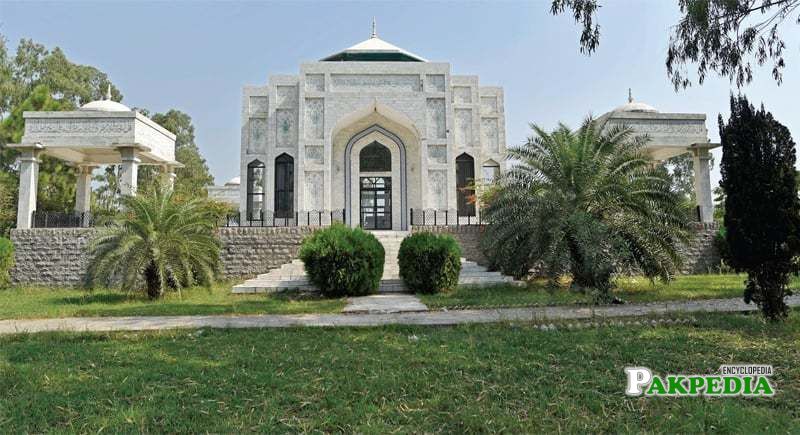
In 1206, Ghauri had to travel to Lahore to crush a revolt. On his way back to Ghazni, his caravan rested at Damik in Jhelum district of Punjab province in modern-day Pakistan. He was assassinated while offering his evening prayers by a small band of Hindu Khokars.The murderer killed him so brutally that there were 22 wounds on his body.
Burial
As per his wishes, Ghauri was buried where he fell. His mouseleum was recently constructed by the Government of Pakistan. While driving from Rawalpindi to Jhelum on GT Road, just before Mandra, a road on the right leads towards Chakwal. On the left a narrow road connects several villages with GT Road. At the turning a small board guides to the tomb of Shahab-ud-Deen Ghauri. [8] death
Legacy
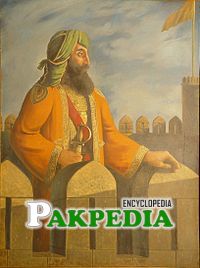
Muhammad’s death left his generals in control of the whole of North India. He was succeeded by Qutb-ud-din Aybak, who had started of by sacking Ayodhya in 1193 C.E. then served as Muhammad’s governor in India. He was Sultan until 1210, claiming the title “Sultan of Delhi. His established the Ghulam Dynasty, which ruled until 1290. He also started to build the Qutb complex at Delhi. As a former slave, Qutb-ud-din Aybak lineage is described as a Mamluk, or slave dynasty. Under these rulers, “India became for the first time the seat of resident” Muslim “sovereigns. Another slave, Nasir-ud-din Qabacha became the ruler of Sindh and Multan. In fact, Qutb-ud-din Aibak laid down the foundation of slave dynasty in India. Nasir-ud-din Qabacha was finally defeated by Shams-ud-din Iltutmish and Sindh and Multan became part of the Delhi kingdom. [9] legacy
Missile homage
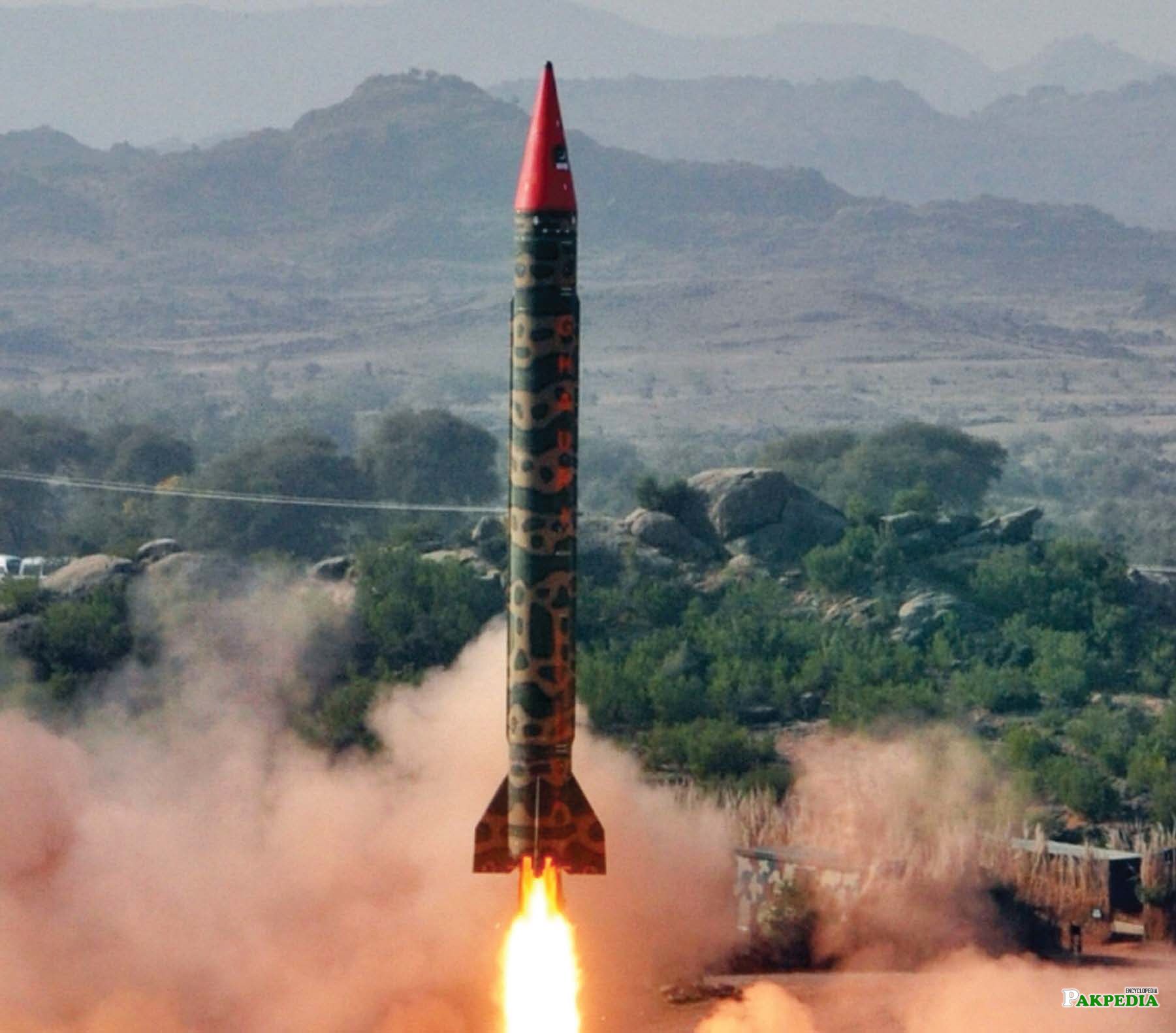
In response to India’s development of its surface to surface missile Prithvi (actually named after one of the Five Elements—The Earth, Prithvi in Sanskrit), Pakistan launched its own missile capable of carrying nuclear warheads on April 6, 1998, called Ghauri I. It was symbolically named after Muhammad of Ghori, who is highly revered in Pakistan for having defeated his arch-rival, the Hindu Rajput ruler Prithvi Raj Chauhan, who is highly revered in India. Pakistan has since developed the Ghauri II and Ghauri III. [10] homage
